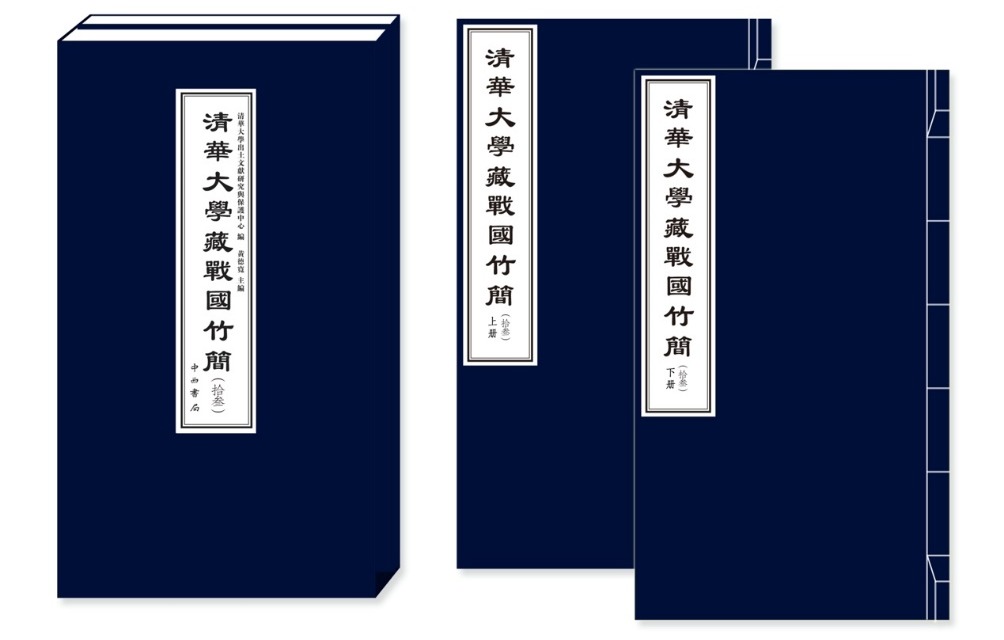The Book Launch for The Tsinghua University Warring States Bamboo Manuscripts 13 金沙集团3354cc藏战国竹简(拾叁) (Volume 13) was held on December 10th at the Meng Minwei Humanities Building, Tsinghua University. The event was attended by over 100 scholars and experts from Tsinghua and academic institutions across China. In addition, the event was broadcasted globally in collaboration with XuetangX, and attracted renown international and Chinese scholars with more than 1,400,000 views online.

Volume 13 reports five Warring States bamboo manuscripts, respectively titled Dafu shili 大夫食礼 “The Great Officers Rites of Banquet,” Dafu shili ji 大夫食礼记 “Addendum to the Great OfficersRites of Banquet,” Wuyin tu 五音图 “Chart of the Five Tones,” Yue feng 乐风 “Airs of Music,” Wei tian yong shen 畏天用身 “Fearing Heaven, Using the Body.” These previously lost manuscripts not seen in the transmitted record offer new evidence for the research in Pre-Qin ritual system, musicology, and philosophy.

The two ritual texts, Dafu shili and Dafu shili ji, prove to be the most attractive ones. Bonded as one scroll, the two texts are written on 51 and 14 slips. While the former documents the ritual proprieties ought to be practiced by the hosts and receptionists during the “rite of dining,” the latter records the details of the ritual procedure enforced by the managers of affairs involved in the same rite. Complementary to one another, the texts read similar to Yi li 仪礼 Ceremonies and Rites. Specifically, the documented ritual procedure shows great resemblance with that in the “Gong shi dafu li” 公食大夫礼 “Rite of the Lord Having a Banquet with the Great Officers.” Unseen before among the Warring States bamboo manuscripts, the two texts not only preserve the prototype of ritual texts from that period, but also reveal some key features of the great officers rites of banquet in the ancient Chu state(楚国) , making them valuable sources for studies on the Pre-Qin ritual system and the ancient classic, Yi li.
The two musicological texts are equal in their significance. A pentagram is drawn at the center of Wuyin tu. Its upper point matches the note names of the gong 宫 -group notes, then moving counter-clockwise, the other four points correspond to the shang 商, jue 角, zheng/zhi 征, and yu 羽 groups. The pentagram is formed by connecting lines between five pairs of tones: “gong (do) – zhi (so),” “zhi (so) – shang (re),” “shang (re) – yu (la),” “yu (la) – jue (mi),” “jue (mi) – gong (do),” illustrating the generation of the pentatonic scale. The rule of generating the five tones follows the method of sanfen sunyi 三分损益, known as “Spiral of the Fifth” in the West, namely “method of obtaining tones by subtracting or adding the third part.” Such order of the five-tone-generation is consistent with the records in transmitted texts such as Guanzi 管子and Huainanzi 淮南子. Another text, Yue feng contains two sections. Whereas the first section records pitch names, the nature of the second section is yet to be determined. These two musicological texts shed lights on the musical theory and history of music of Early China.
Wei tian yong shen is a philosophical text written on 17 slips with no missing content. It discusses the relationship between heaven and man and the manifestation of human subjectivity. The text promotes the concept of human agency and embodies the proactive spirit of the Warring States period. It provides new literature for the study of the pre-Qin history of thoughts.
The Book Launch was chaired by Professor Liu Guozhong, Deputy Director of the Research and Conservation Center for Unearthed Texts (the Center). Yang Yongheng, Director of the Humanities Development Office at Tsinghua University, highly praised the conservation of the Tsinghua Bamboo Manuscripts. Qin Zhihua, President of Shanghai Cishu Publishing House and Zhong-Xi Bookstore, introduced the editing and publishing status of The Tsinghua University Warring States Bamboo Manuscripts 13. Three young teachers from the Center, Ma Nan, Jia Lianxiang, and Shi Xiaoli, respectively interpreted the five aforementioned documents. Assistant Director of the Center, Cheng Hao, representing Professor Huang Dekuan, the chief editor, presented an overview of the research and organization of The Tsinghua University Warring States Bamboo Manuscripts 13 and moderated the Q&A session with scholars and journalists in attendance.
Today, 13 volumes of organized reports on the Tsinghua Bamboo Manuscripts, in the collection of Tsinghua University since 2008, have been successfully published under the leadership of Mr. Li Xueqin and Mr. Huang Dekuan. The efficient and high-quality work of the conservation team has received widespread recognition in academic fields and been highly valued by overseas sinologists. During the Book Launch the Center announced that the conservation of the Tsinghua Bamboo Manuscripts has entered a crucial stage. The conservation team will overcome difficulties and ensure the annual publication progress, aiming to soon release these important materials to the public and academia.
From Research and Conservation Center for Unearthed Texts
Editor: Li Han

